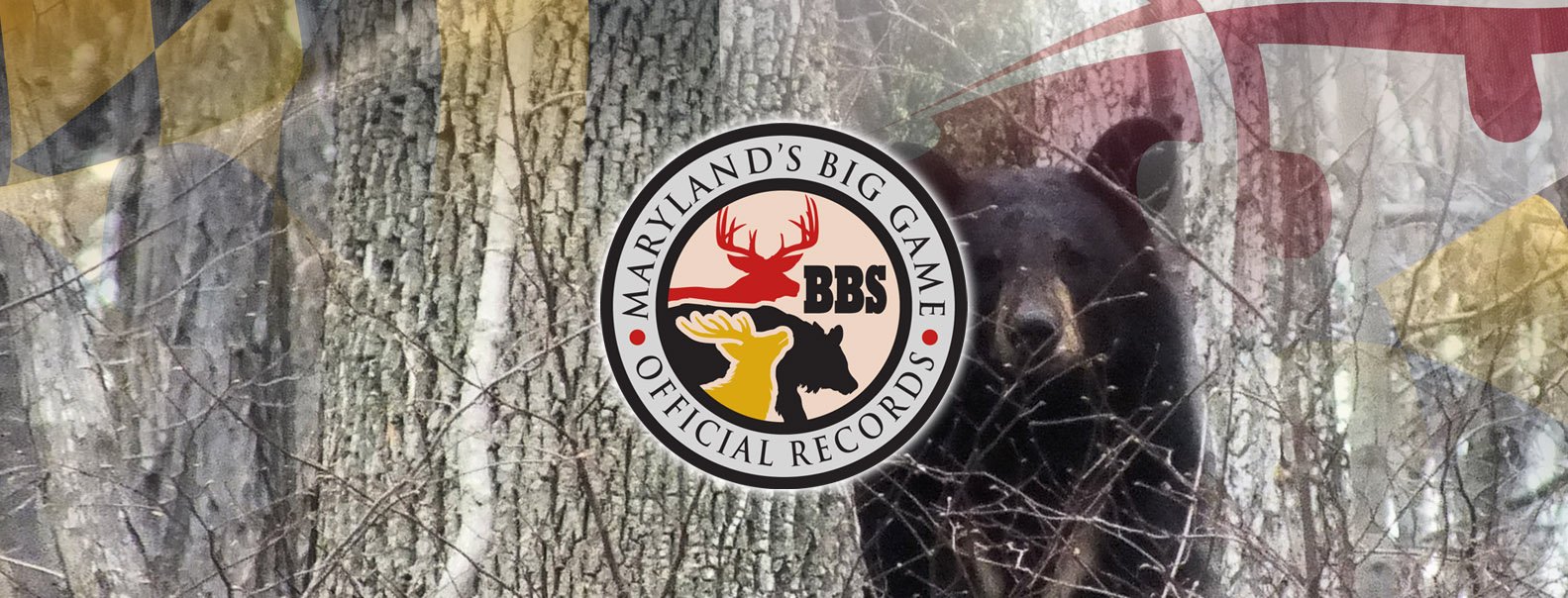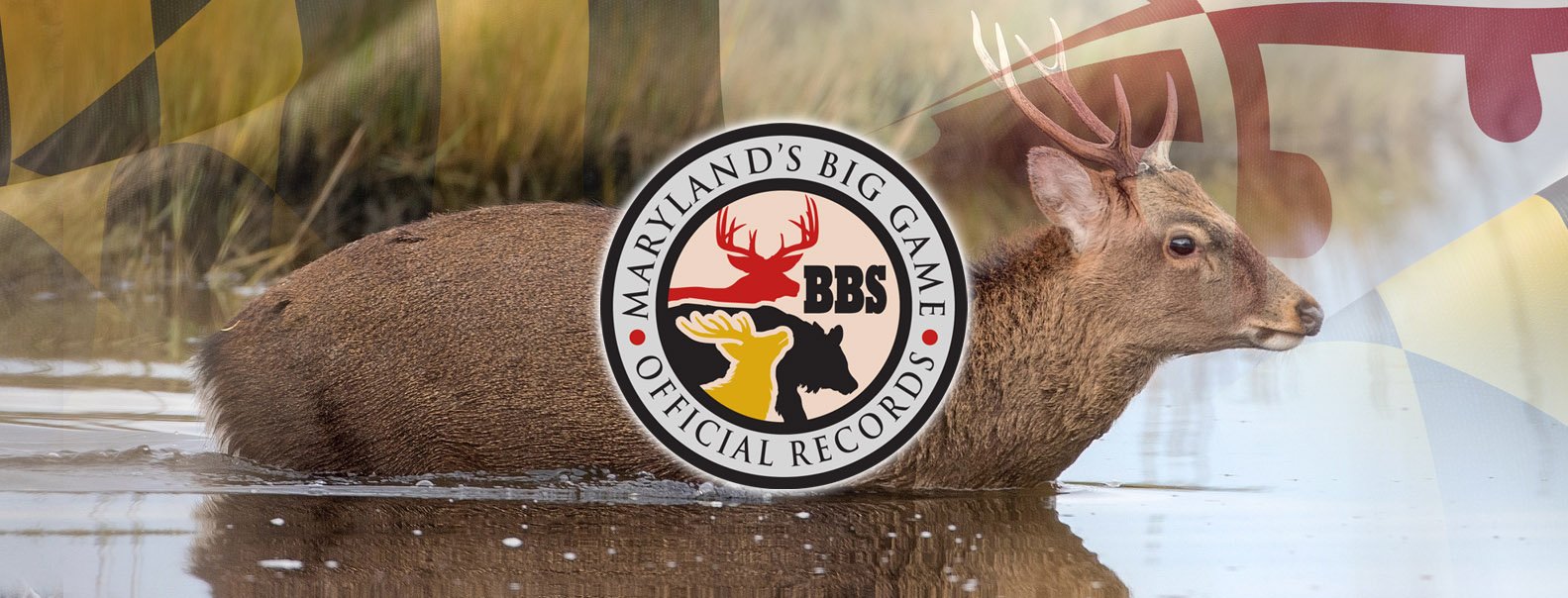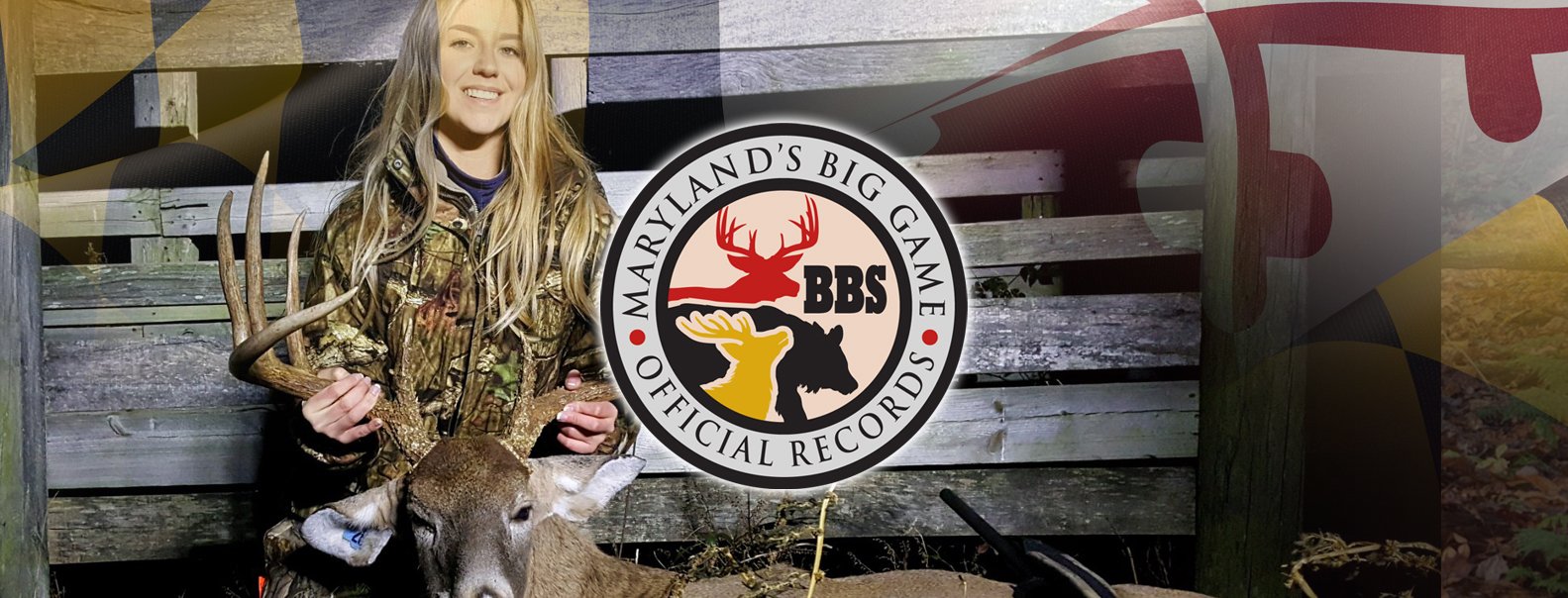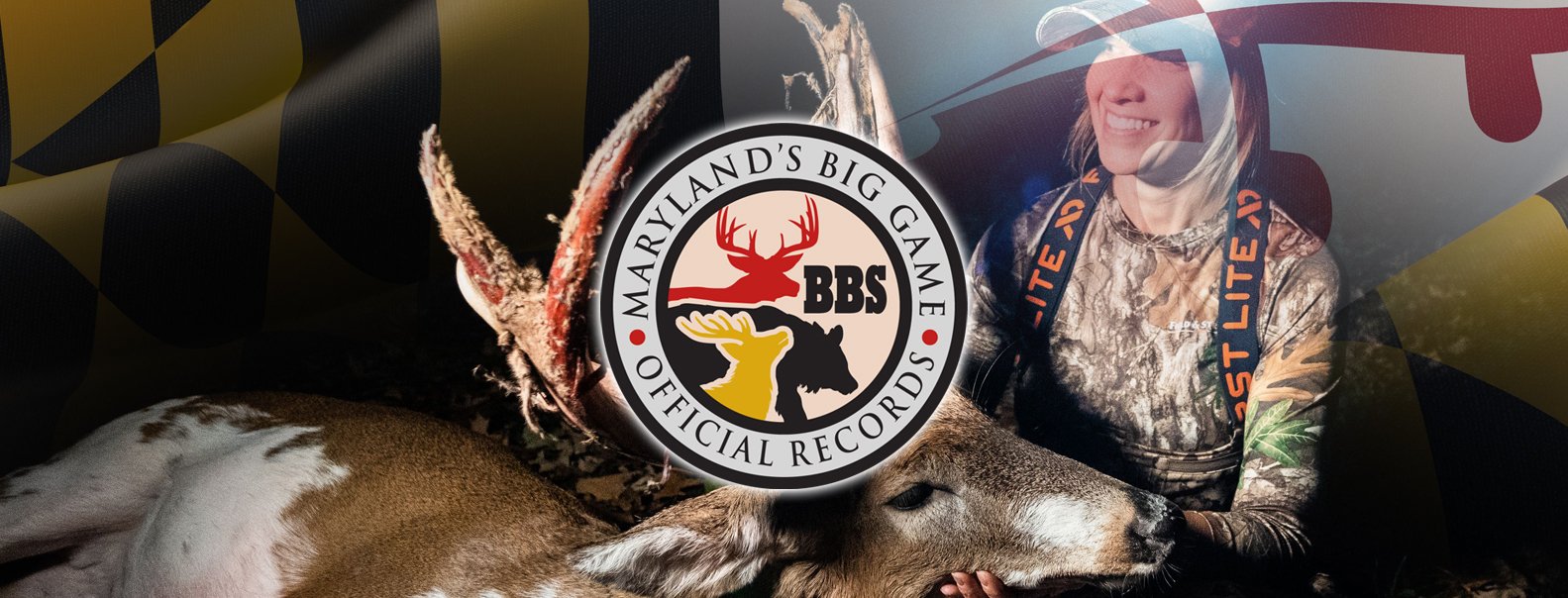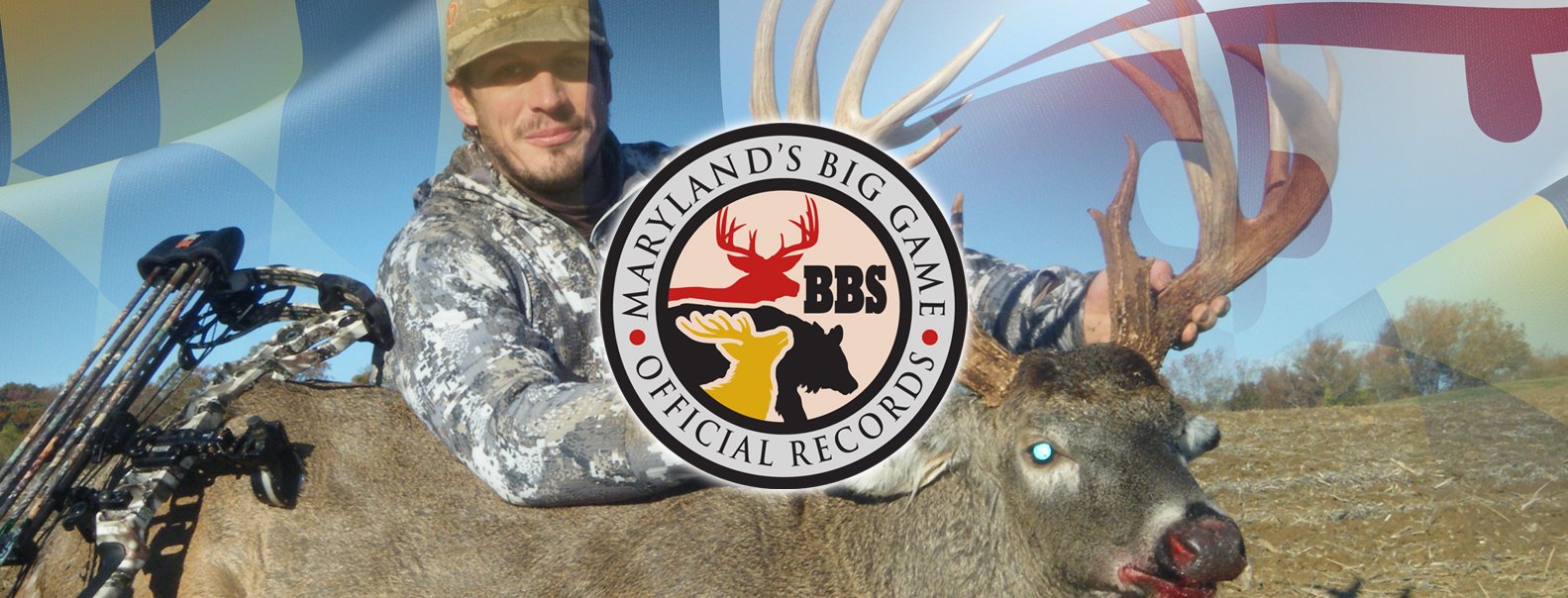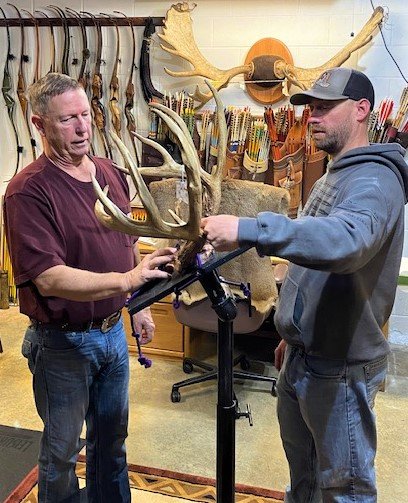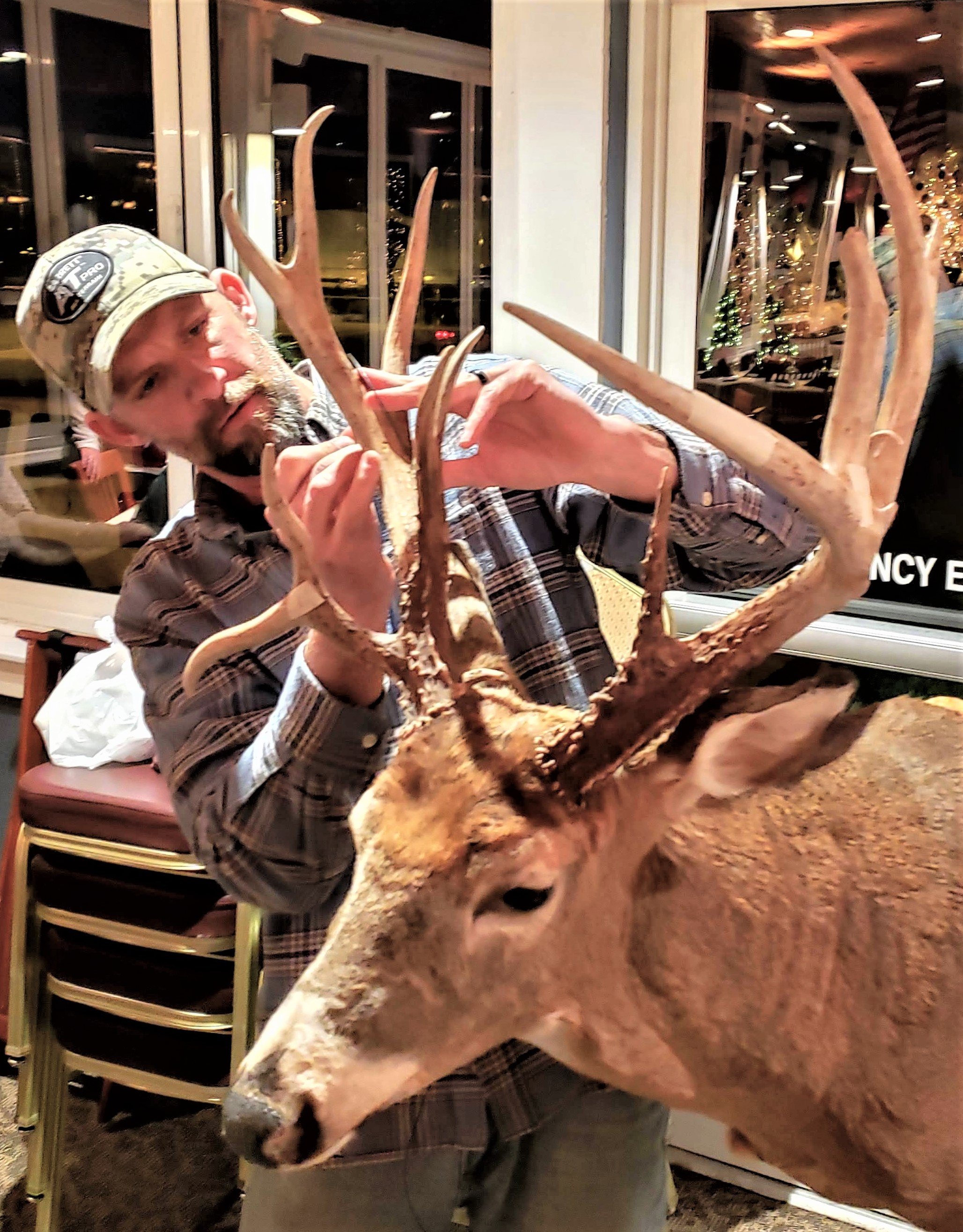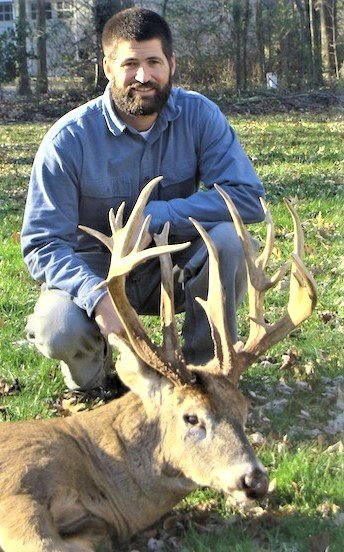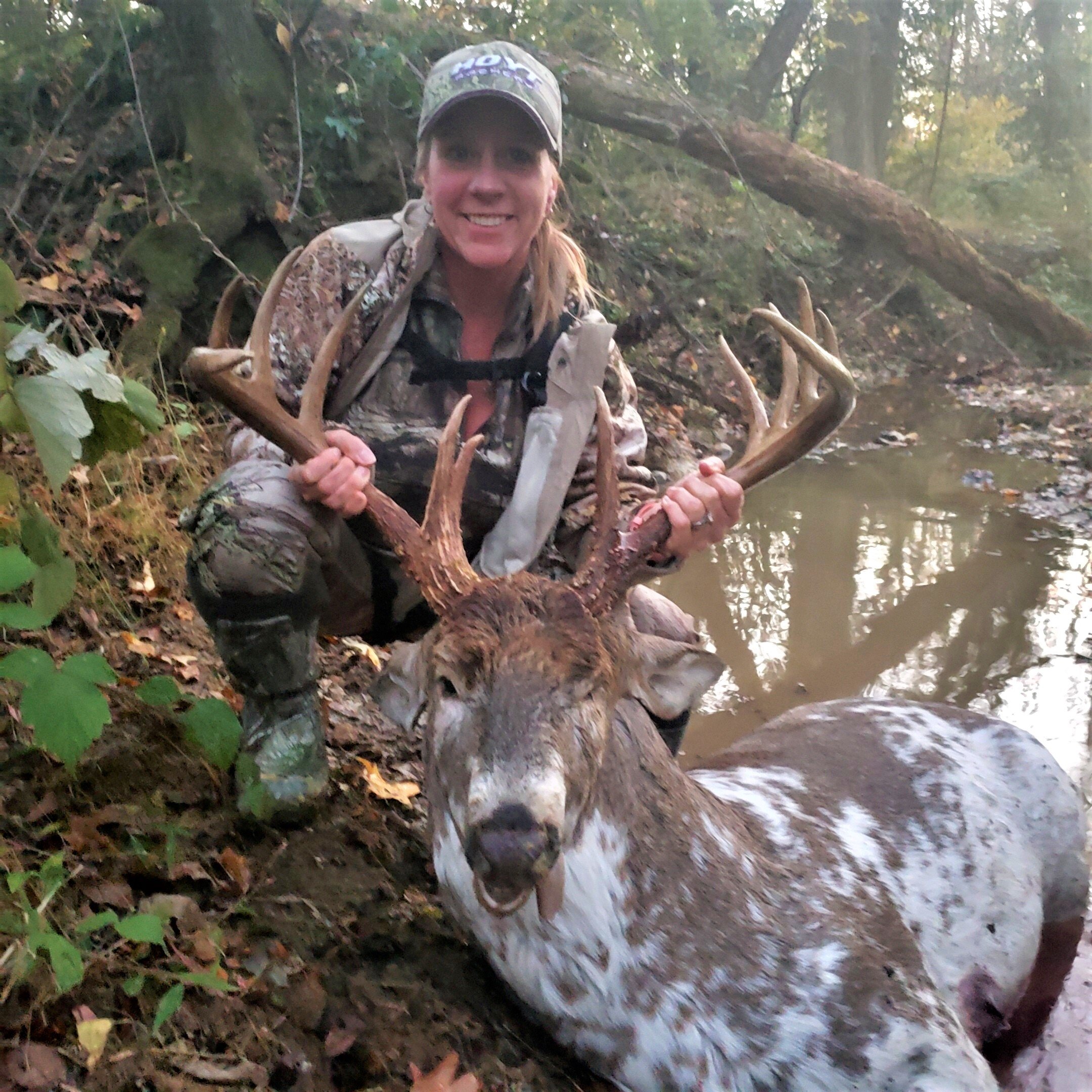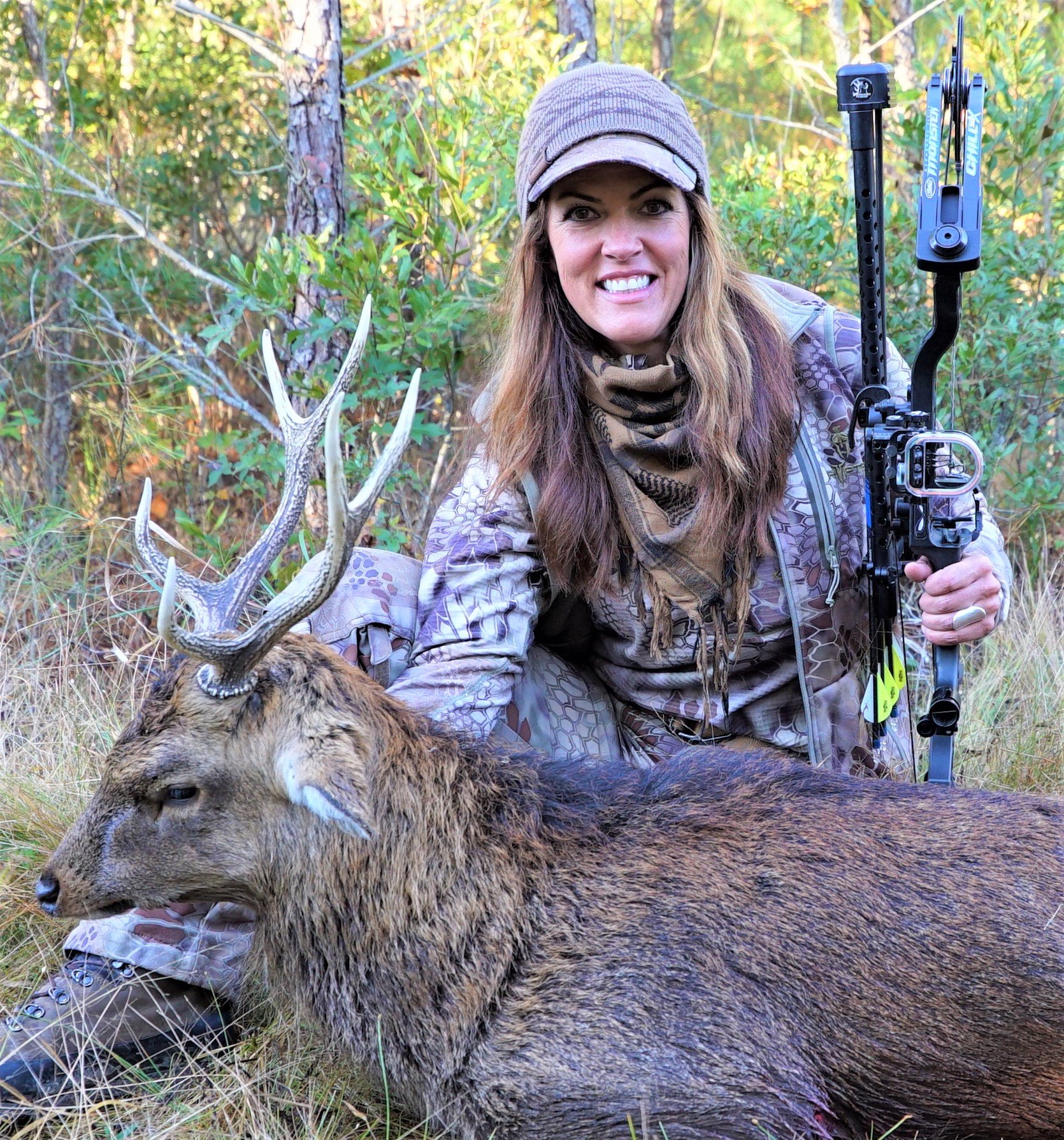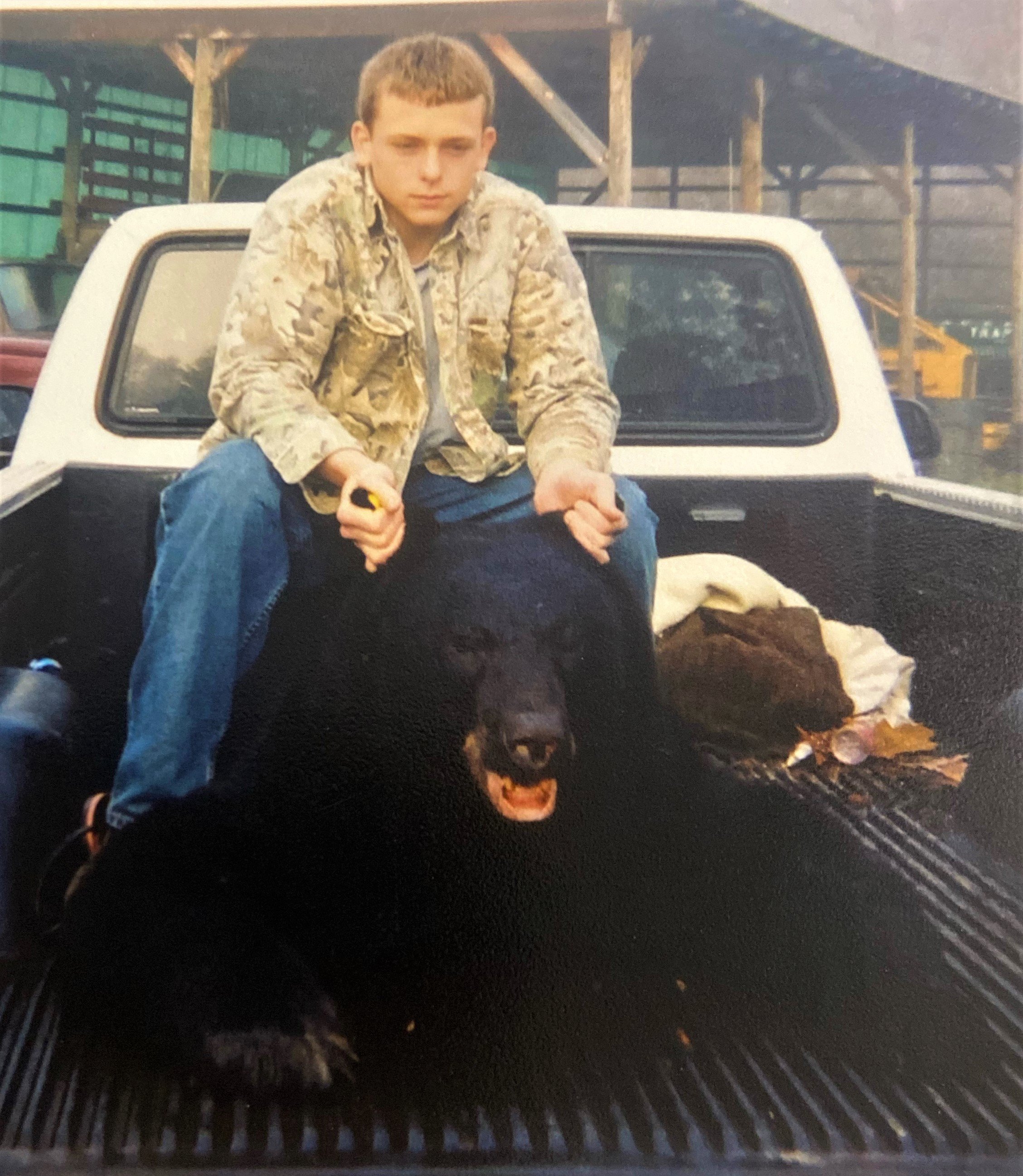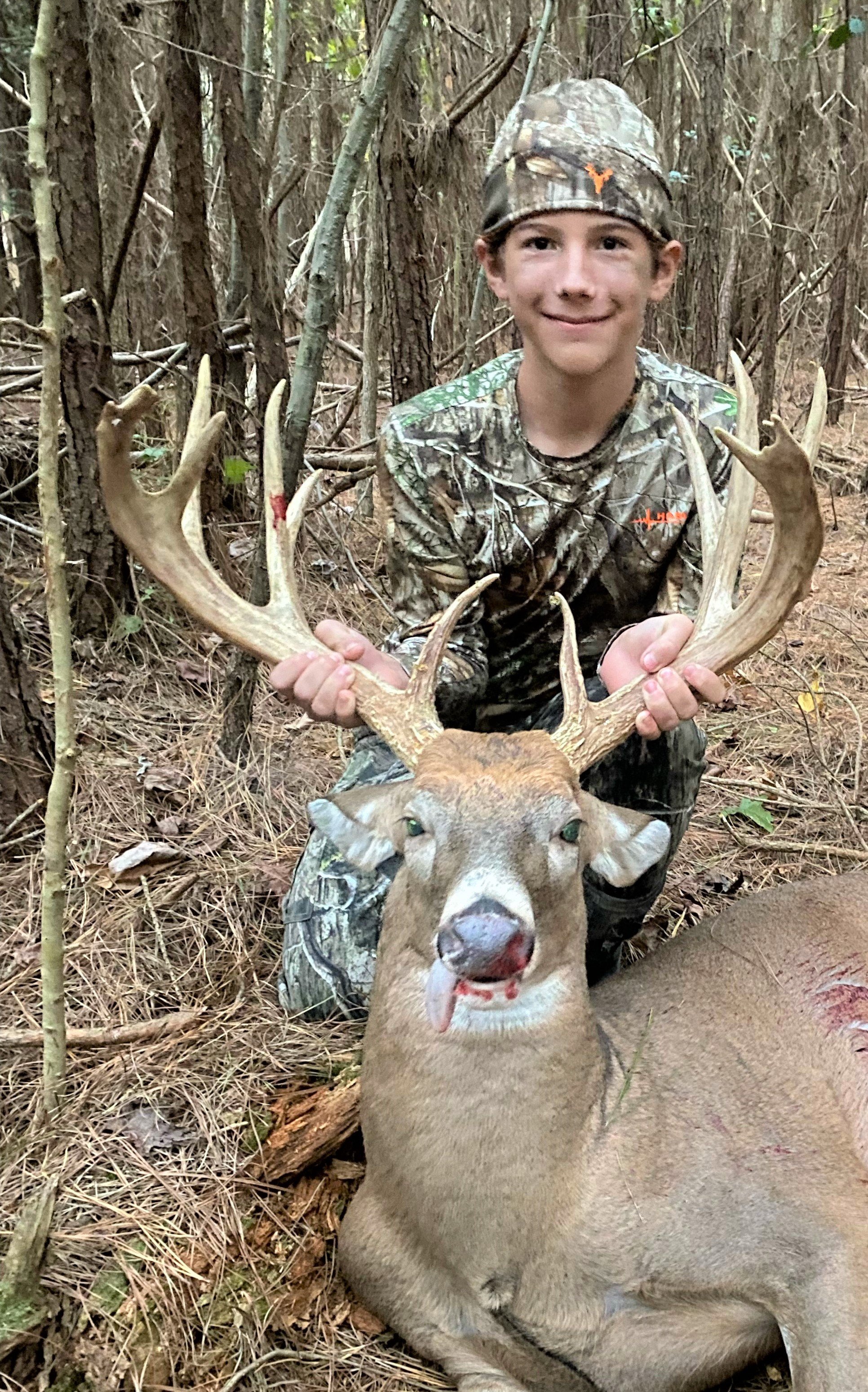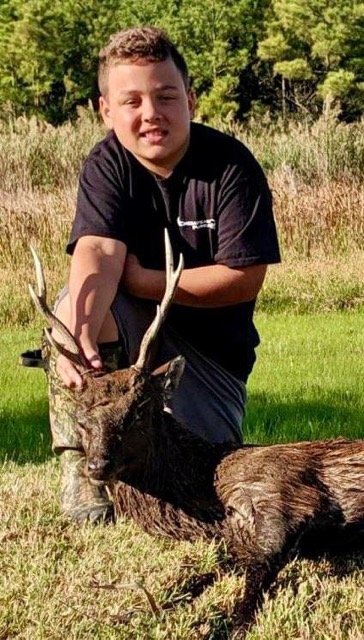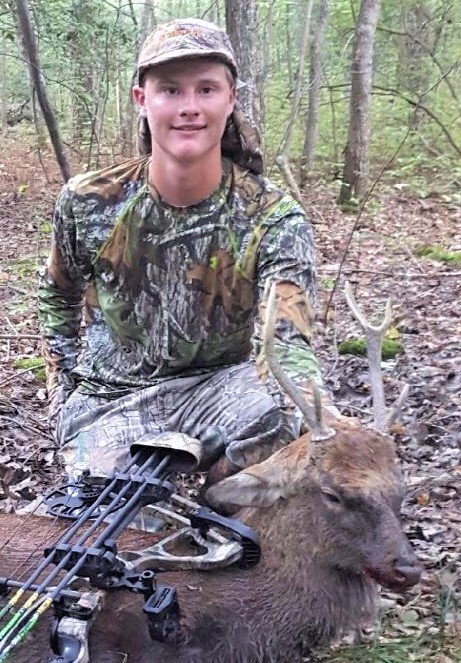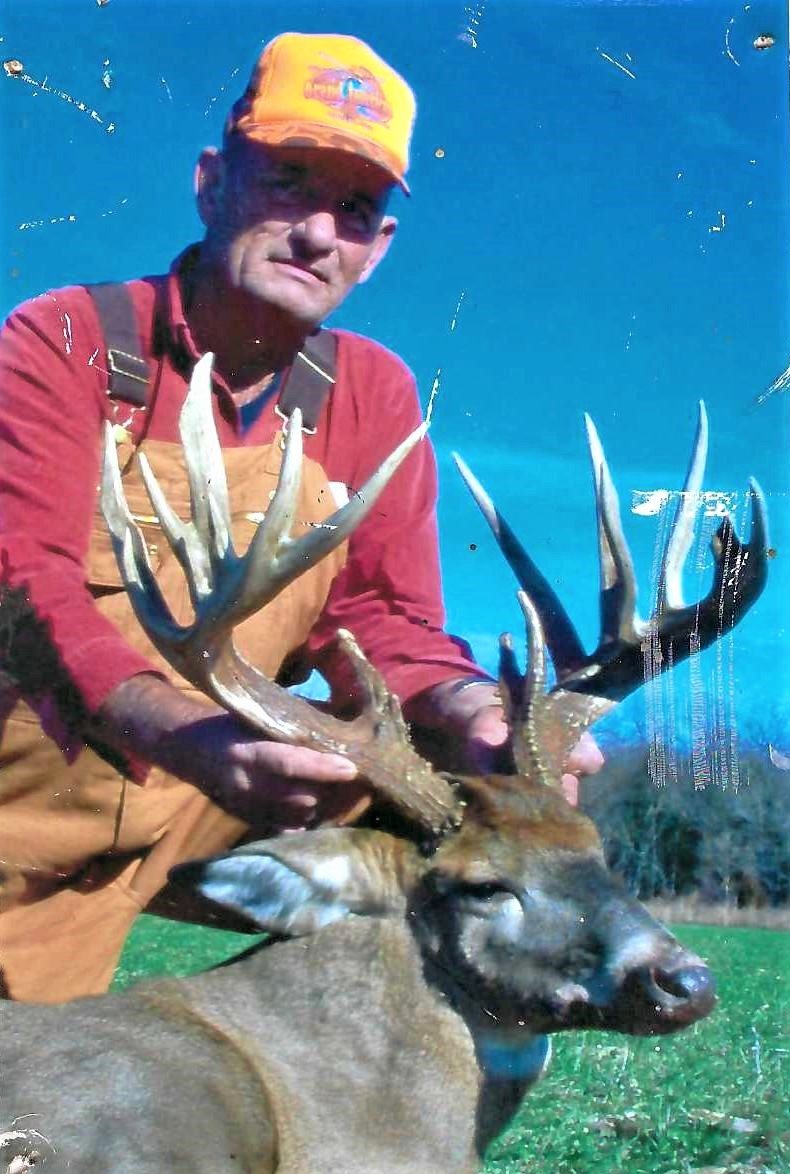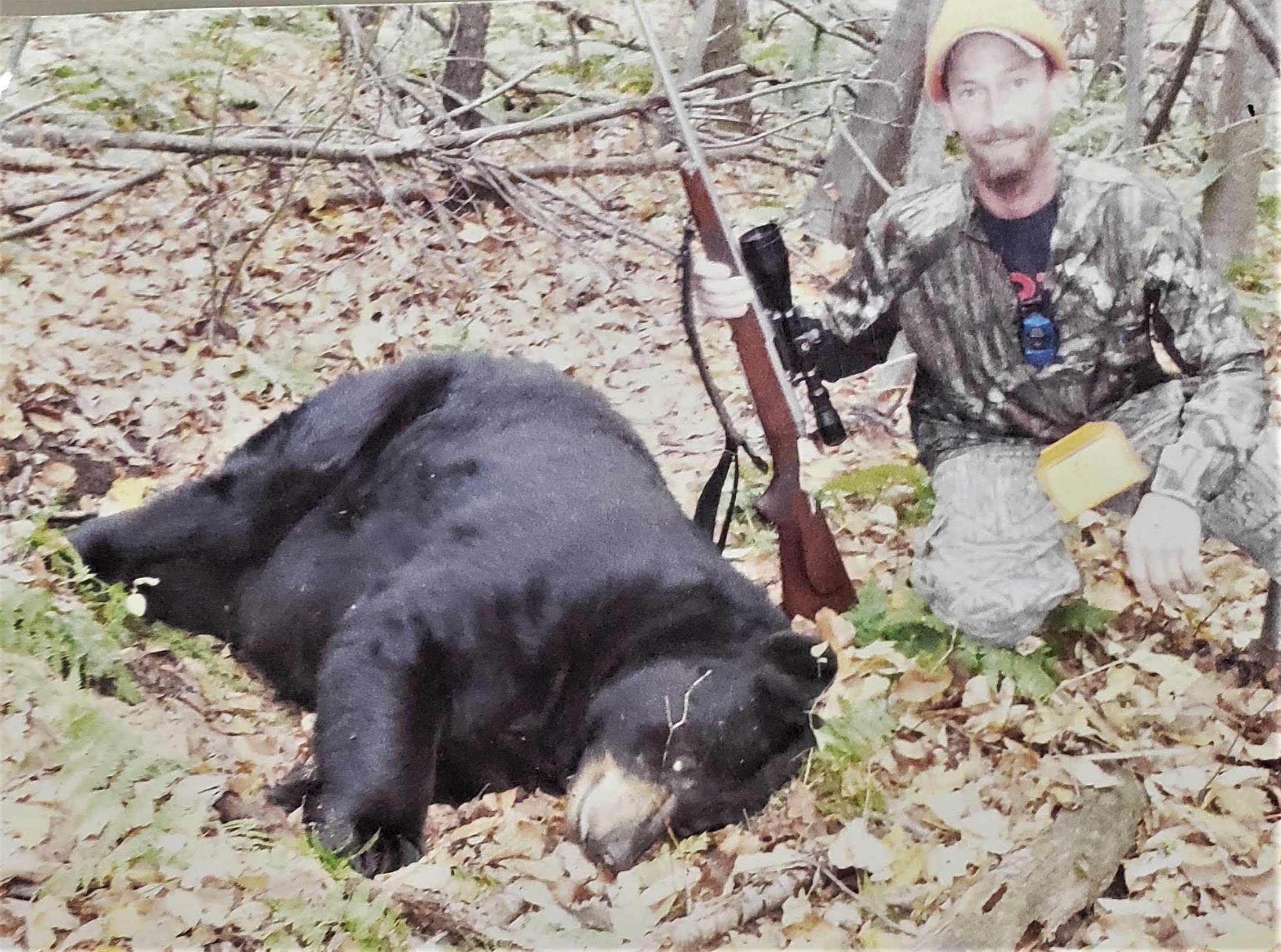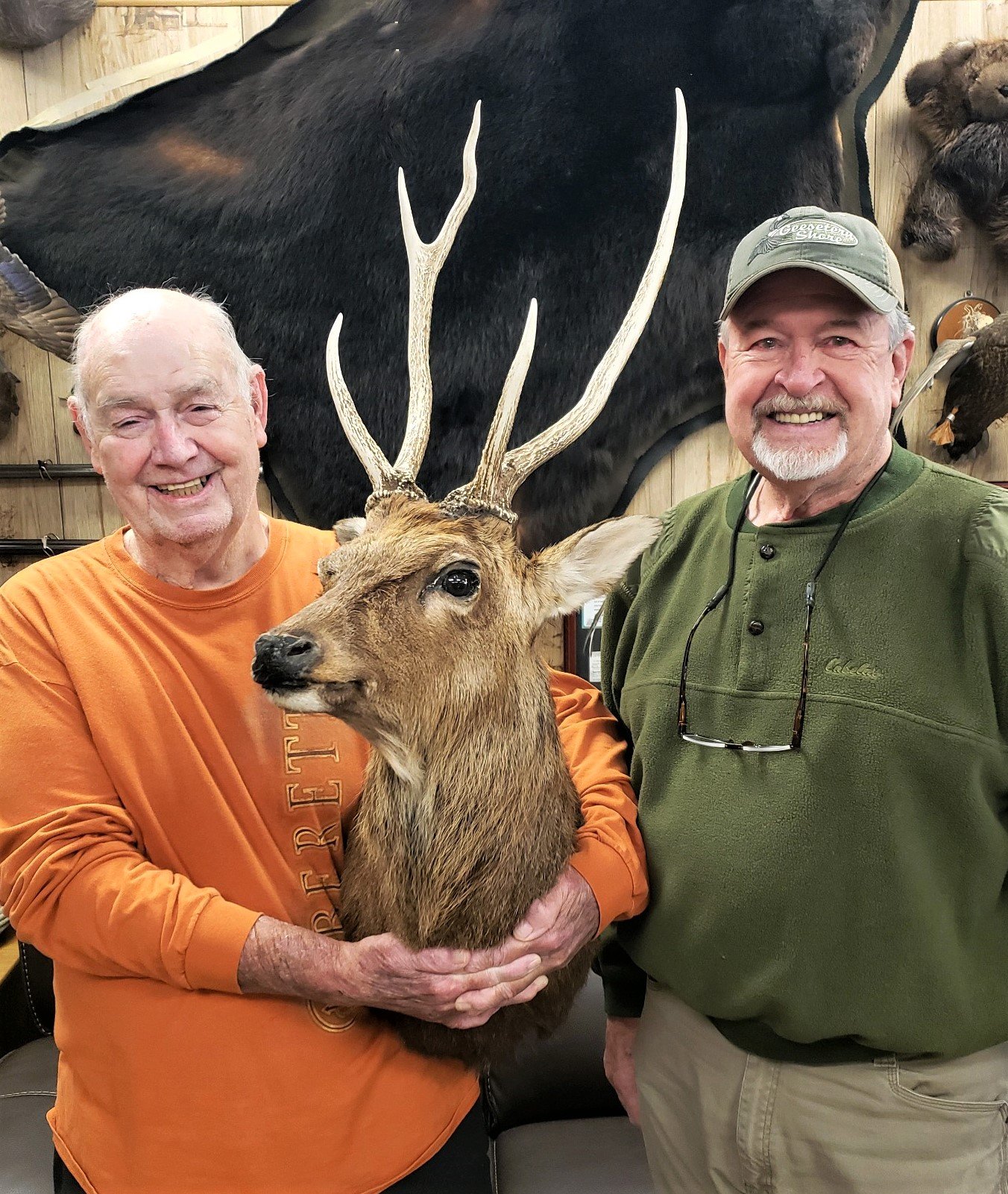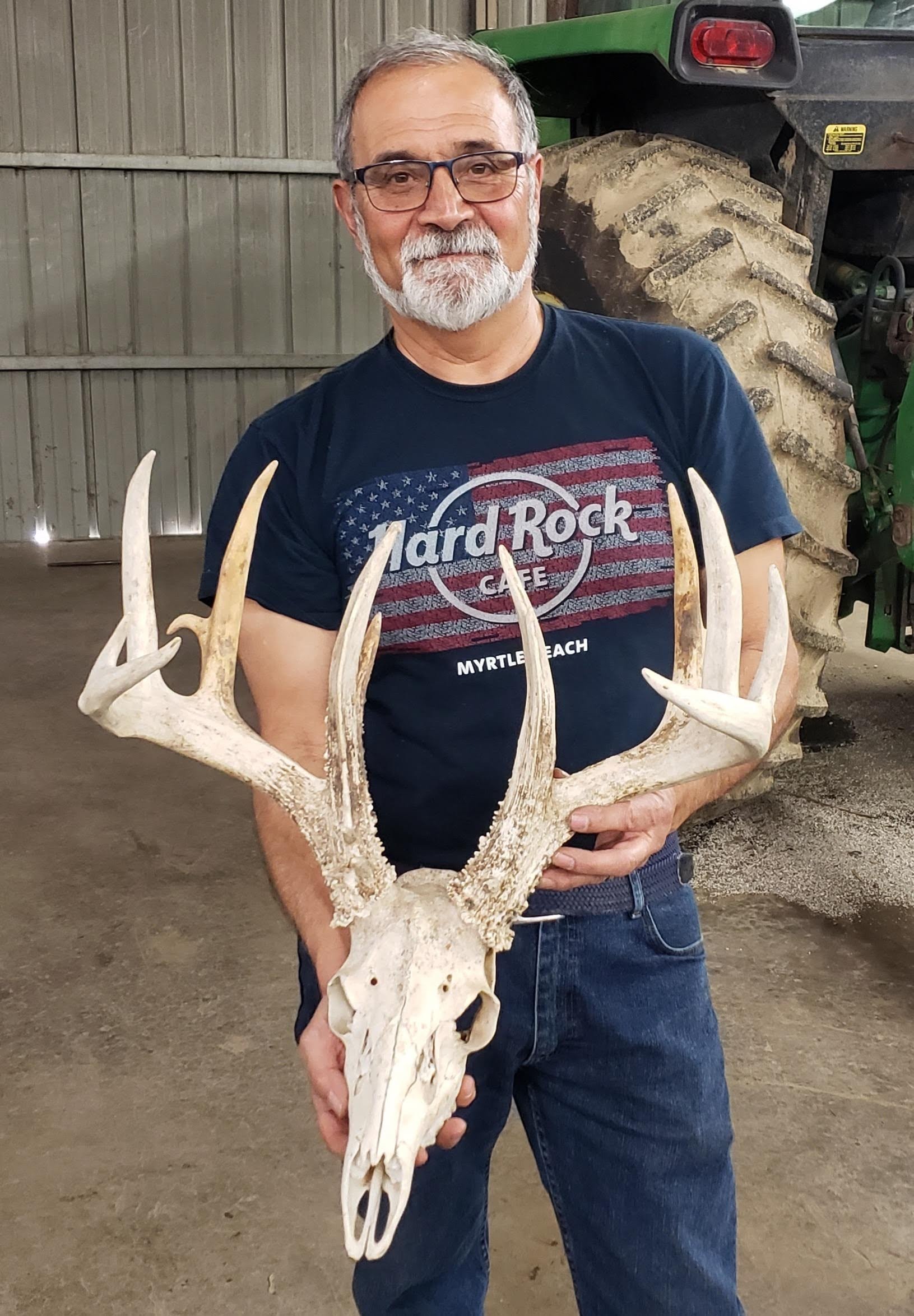bucks-bears-stags
frequently asked questions
Compiled by Robert Newton III, Scoring Director, as well as BBS Team Members
What does Bucks-Bears-Stags do?
Bucks-Bears-Stags, established in 2017, is the official record-keeping organization for Maryland’s Big Game Species: White-Tailed Deer, Black Bears, and Sika Deer Stags.
The BBS Team of Official and Authorized Measurers (OMs) are trained in measuring these animals. Most of the BBS Team Members are Official Measurers for national measuring organizations, such as the Boone and Crockett Club, Pope and Young Club, or both. The list of Official and Authorized Measures can be found here. BBS also published Maryland’s first comprehensive big game record book titled Maryland’s Finest: The Records and the Legacy. Future record books are planned to be published every three years with the next edition expected to be published in 2023.
How does an animal get measured?
Most animals can be measured by making an appointment with an Official Measurer in the hunters’ local region or by attending a Measuring Event.
What measuring method does Bucks-Bears-Stags use to calculate an animal’s measure?
Our official measurers utilize the long-established Boone and Crockett Club measuring method. Bucks-Bears-Stags was authorized to use Boone and Crockett Club’s measuring system for Bucks-Bears-Stags in 2017.
Is your White-Tailed Deer rack typical or non-typical?
An abnormal tine is any point that does not come off the top of the main beam. Any rack that has at least one inch of abnormal tine length can be entered in the non-typical category. Due to higher entry minimum scores for non-typical deer, many times it does not benefit the hunter/animal to place in this category unless several abnormal inches exist.
Bucks-Bears-Stags (BBS) Official Measurers (OMs) will try to direct the hunter to which category their deer will rank best in. However, if the animal qualifies for either the typical or non-typical category, the decision is left to the hunter as to which category they want their deer to be recognized in.
Is there a non-typical category for Sika stags?
Non-typical Sika stags are extraordinarily rare; therefore, BBS does not have a separate category for them. However, a stag with non-typical inches can still make our records if the antlers reach or exceed a net score of at least 50 (fifty) inches. The abnormal points would not be a factor in the main frame scoring of the rack and therefore would not be added to the typical gross score or deducted for the net. BBS would only consider the main frame. That being said, after those figures are complete, the OM would add the total number of abnormal inches to the typical gross to make the overall “total gross score” which would show exactly what the deer grew.
Why is there a 60-day drying period?
This is a process followed by all big game record clubs: 60 days, flesh-free, room temperature. It is considered a sufficient time frame for all moisture to have left the antlers and skull plate. In this drying period there will usually be some shrinking in the antlers as well as the inside spread. Please note: Do not place a spacer between the antlers during this period in an attempt to secure the original inside spread. It is very likely that the spacer will cause the skull plate to crack as the drying takes place. If that happens, the animal will not be eligible for BBS records due to losing the ability to find the accurate inside spread measurement. A 60-day requirement for measuring helps keep an even playing field for all racks.
Why does BBS have multiple categories with different minimum requirements?
Entries are divided by Typical and Non-Typical due to non-typical racks generally tallying several more inches from the extra measurable points. Therefore, non-typical categories have higher minimums.
Entries are also divided by methods used to harvest the animal: Firearms, Vertical Bows (compound & traditional); Crossbows, and Muzzle-loading Firearms.
The minimums required for each category are based on the general idea of the degree of difficulty of the equipment used to harvest the animal. The more difficult, the lower the minimum score required to enter. Vertical bows and crossbow categories have the lowest minimum entry scores. Muzzle-loader firearms which have more steps involved in their usage. Finally, a firearm has the highest minimums based on distance and accuracy that comes with their use.
Note: BBS minimum entry sores have been established in Maryland for decades and were used by previous measuring groups. BBS kept these established minimums in place for consistency. For an animal to qualify for the national record-keeping organizations, the minimum scores are higher.
Does BBS have an All-Female Division?
Yes! Coming in the Second Edition of Maryland’s Finest, BBS will be introducing this new category for all female hunters. Entry minimums will be the same as our standard Hunter Division requirements and these entries will still be included in all categories that they qualify in as well. The female division will be an additional category to help showcase the growing number of female hunters in our state and to recognize their accomplishments as BBS continues to promote the legacy of hunting in Maryland.
Youth Hunter Entries
Bucks-Bears-Stags will measure all Youth Hunters’ Maryland White-Tailed Deer, Black Bears and Sika Deer Stags with no entry fee through the end of the 21-22 Hunting Seasons. Youth Hunter Entry Fees ($10) will be waived. Youth Hunter Entries are those animals harvested by Youth Hunters 16 (sixteen) years-of-age and younger. Entries will be accepted from any year as long as the person was a Youth Hunter at the time and has verification. (Confirmation Number or Corroborating Information)
Youth Minimum Scores - For entries to be included in “Maryland’s Finest” Second Edition:
Whitetail Bucks Typical / 110 inches
Whitetail Bucks Non-Typical / 125 inches
Black Bears / 16 inches. Length + Width of cleaned skull
Sika Stags / 50 inches
Official measuring cannot occur until after the mandatory 60 day dry-out period of flesh-free antlers and skulls has been met. Sponsorships for Youth Entries are Available to Individuals or Businesses interested in supporting the BBS Youth Initiative. Sponsors can choose their level of financial support. For example, $50 = 5 youth entries - $100 = 10 youth entries, etc. Sponsors will be acknowledged on social media platforms and other media when a youth-harvested animal is measured in their zone. For more details, click here.
Does BBS accept deer from past seasons?
Yes, they are called historical entries. Animals from any year are accepted. BBS will help direct you how to obtain old confirmation numbers if you no longer have them. BBS also considers “corroborating factors” on a case-by-case basis. We encourage you to reach out with these older harvests to help BBS generate as much of Maryland’s rich hunting history into the records as possible.
Are animals accepted that are not recovered the same day as the shot?
These animals can be accepted. But a decision will be made on a case-by-case basis decided by the circumstances of the recovery and by the BBS staff. Situations where animals were left to be tracked the following morning and were then recovered are typically accepted.
It gets a bit more challenging when multiple days have passed. The OM would need a written narrative on the recovery process and then determine if there is sufficient information proving the animal is in fact the one shot by the hunter and that its death was from the shot. Our goal is to accept any animals we can, within reason. The “Picked-Up” category was established to recognize animals not immediately recovered, as well as those killed by auto strikes and those found outside normal hunting seasons (e.g. while shed hunting).
For the “Picked-Up” category do I need a possession tag/confirmation number?
Yes. You must have a tag/confirmation number for any animals entered. If you find a buck or stag rack that you want to keep and have measured, contact DNR to acquire a non-hunting tag. If the animal is killed on the road, ask an officer for a salvage tag or contact your local DNR or Natural Resources Police (NRP) office. Non-hunting tags are also available online, from a desktop computer, on the DNR Compass website.
Does BBS accept velvet entries?
Yes, velvet entries are accepted. However, they are listed in their own category. A layer of velvet inflates the measurements that are supposed to be on bone, therefore cannot be compared to clean antlered racks. Replicated velvet antlers are not eligible for BBS records due to not being actually grown by the animal.
Are repaired tines measurable?
Repaired tines can only be measured to the break. BBS official measurers cannot measure material that was not grown by the animal. In the case of a broken tine that has been glued back on, the measurer would need to be able to see clearly that it is seated back in place perfectly in order to then consider including it in the measurements. Please make us aware of any repairs. Sometimes these are hard to identify by the OM unless they are informed.
What if my Maryland Black Bear skull is damaged by a bullet or processor?
There are only two measurements to establish a score for Black Bears: length and width. Unfortunately, damage occasionally happens. BBS has seen three bear skulls where the processor has sawn off the back of the skull. This damage will lower the skull’s measurement. Simply put, we cannot measure something that is no longer there. The same thing applies if the hunter shoots the animal in the skull and damages it by reducing either the length of the width. Please remind your processor when dropping off your bear to not let this damage occur.
MARYLAND'S FINEST: THE RECORDS AND THE LEGACY
2nd edition
This book is a compilation of more than 30 years of the best and biggest Maryland Whitetails, Black Bears and Sika Stags ever recorded. It's not just names and numbers. True, we honor the animals and recognize the hunters. But we have also included history, photos and stories; all to promote Maryland's outstanding science-based wildlife management with the overarching theme of conservation.
Maryland’s Finest is packed with stories and pictures along with the highest scoring bucks, bears and stags across Maryland.

